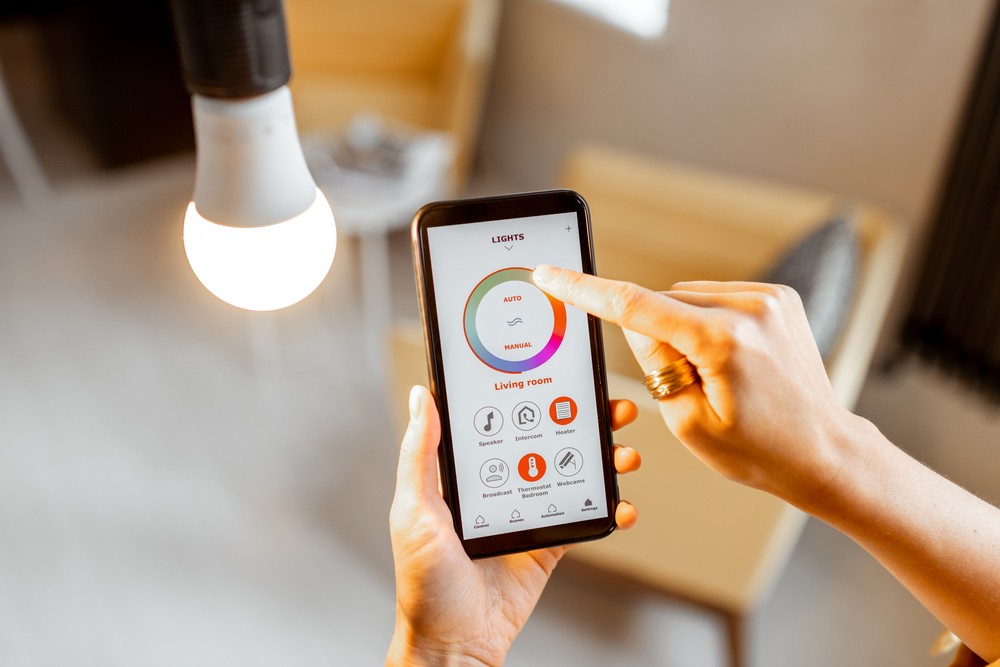Investing in LED smart bulbs can be a game-changer for households striving to lower energy bills and enhance the ambiance of their living spaces. The modern consumer faces an array of lighting choices, yet smart bulbs stand out as an energy-efficient, versatile, and customizable option that promises both economic and experiential benefits. As people become more aware of environmental sustainability and personal convenience, understanding the advantages of LED smart bulbs becomes crucial.
LED Smart Bulbs
LED smart bulbs are an advanced iteration of traditional light bulbs that incorporate LED technology with smart capabilities. Unlike incandescent or CFL bulbs, LEDs (Light Emitting Diodes) are known for their outstanding energy efficiency. These bulbs can connect to Wi-Fi or Bluetooth, allowing users to control lights through smartphones, tablets, or voice-activated devices like Amazon Alexa, Google Assistant, or Apple HomeKit.
Benefits of LED Technology
Before examining the “smart” aspect, it’s important to appreciate why LED lighting is superior to traditional options. Here are a few key advantages:
- Energy Efficiency: LED bulbs use up to 75% less energy compared to incandescent bulbs and can last 25 times longer.
- Longevity: On average, a good quality LED bulb can last anywhere between 15,000 to 25,000 hours.
- Environmental Impact: With reduced electricity consumption, LEDs help decrease greenhouse gas emissions, significantly lowering carbon footprints.
- Durability: They are less prone to breaking due to their solid-state construction.
- Instant Brightness: Unlike CFLs, LED bulbs do not require warm-up time to reach full brightness.
- Less Heat Emission: LEDs emit far less heat than traditional light bulbs, reducing cooling costs in the home.
Smart Features That Transform Home Lighting
LED smart bulbs extend far beyond basic lighting functionality. They offer a range of intelligent features designed to optimize energy usage while providing convenience and enhancing lifestyle.
Remote Control and Scheduling
With smart bulbs, you can control the lighting of your home remotely through mobile apps. Forgot to switch off a light in the morning rush? Simply use your smartphone to turn it off from anywhere. Some apps even allow you to schedule specific times for lights to turn on or off, ensuring you never come home to a dark house or waste energy.
Energy Usage Monitoring
A key feature available with some smart bulbs is energy consumption tracking. Checking how much energy you are using can help you make adjustments that contribute to lower electricity bills. Through detailed reports and analysis, these features provide insight into how your lighting expenses can be minimized.
Integration with Smart Homes
LED smart bulbs integrate seamlessly with other smart devices. Imagine setting up a routine where your lights dim and your favorite playlist starts playing automatically—perfect for winding down after a long day. With such smart home integration, achieving the perfect mood is as simple as a voice command or app tap away.
Custom Lighting Options
Smart bulbs offer unprecedented control over lighting color and intensity. Whether working from home or hosting a dinner, you can adjust the color spectrum and brightness to suit any occasion. Many smart bulbs boast a broad range of colors, allowing you to switch from energizing whites to soothing, warm hues. The capacity to adjust lighting according to the time of day can even enhance wellbeing by aligning indoor lighting with natural circadian rhythms.
Cost-Effectiveness of LED Smart Bulbs
While LED smart bulbs are typically more expensive upfront than their incandescent or CFL counterparts, their cost-effectiveness comes through long-term savings.
Upfront vs. Long-Term Savings
Initially, buying smart bulbs may seem like a significant investment. However, their energy efficiency ensures lower monthly utility bills, while their longevity reduces replacement costs. According to various estimates, replacing a home’s lighting system with LED smart bulbs can result in savings of up to $100 a year, depending on the size of the home and the number of lights replaced.
Utility Rebates and Incentives
Many local governments and utility companies offer rebates or incentives for switching to energy-efficient lighting such as LEDs. These programs can help offset the initial purchase cost, accentuating the financial benefits of making the switch.
Adjustable Brightness Contributes to Savings
With adjustable brightness settings, users can further economize on energy use. By dimming lights to suit the specific task or ambiance required, you can reduce energy consumption even more, adding increments of savings over time.
Barriers and How to Overcome Them
There are, of course, certain barriers that might deter potential buyers from adopting LED smart bulbs.
Initial Cost Concerns
The main barrier often cited is the higher initial cost. However, as more manufacturers enter the market and competition increases, prices continue to decrease. Scouting for promotions, discounts, and taking advantage of utility incentives can also help mitigate these costs.
Compatibility Issues
Compatibility with existing smart home systems can be another issue. Consumers are advised to ensure their smart bulbs are compatible with their preferred home assistants or existing smart ecosystems. Reading reviews and recommendations can help make informed purchasing decisions.
Complex Installation
While some users may worry about installation complexity, most LED smart bulbs are designed for easy installation. Usually, replacing existing bulbs and following straightforward app setup instructions are all that is required. For smart switches and more integrated solutions, seeking professional help may be a prudent choice to ensure optimal setup.
Choosing the Right LED Smart Bulbs
Several factors should be considered when selecting the right LED smart bulbs, tailored to both energy efficiency and personal taste.
Lumen Output
One important factor is the lumen output, which measures brightness. Understanding the appropriate lumen rating for different spaces ensures optimal illumination and cost efficiency without overburdening electrical consumption.
Color Temperature
Color temperature is another consideration. Measured in Kelvin, this scale ranges from warmer yellows (2000-3000K) to ice-cool blues (5000K and above). Selecting an appropriate range enhances both visual appeal and comfort in each room.
Brand Reputation and Reviews
Opting for reputable brands and checking user reviews is wise to ensure product quality and compatibility with existing systems. Renowned brands often have better reliability, customer service, and app interface.
Integration and Features
Consider whether the bulb integrates with existing smart home devices, and what features are most important, be it voice control, scheduling, energy monitoring, or color-changing capabilities. Balancing these factors against budget will guide you to making a wise purchase.
Switching to LED smart bulbs equips your home with modern technology that cuts energy costs and transforms your living experience in unprecedented ways. From remote access and increased security to innovative ambiance control, these bulbs illuminate not just homes, but a more sustainable future. Making an educated purchasing decision allows consumers to meld financial savings with enhanced living spaces, demonstrating that smart living is indeed bright living.



